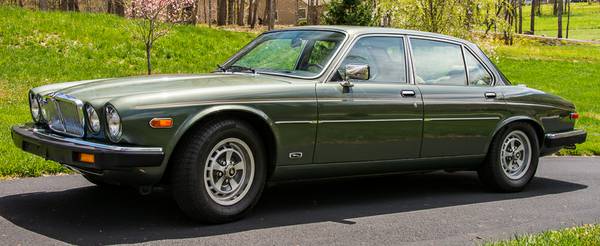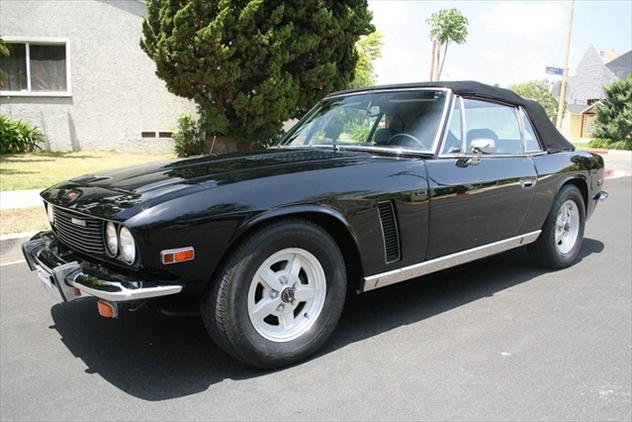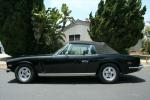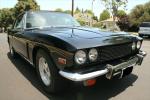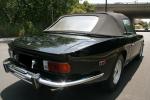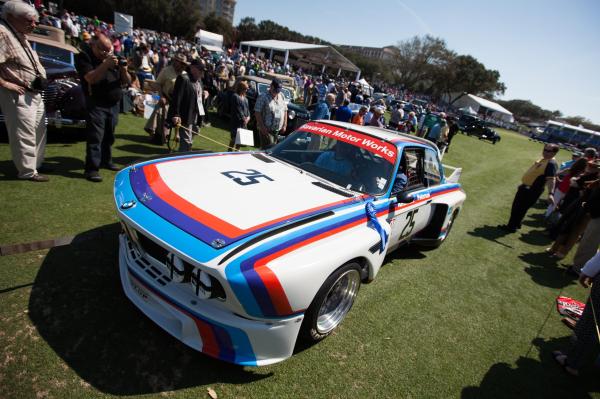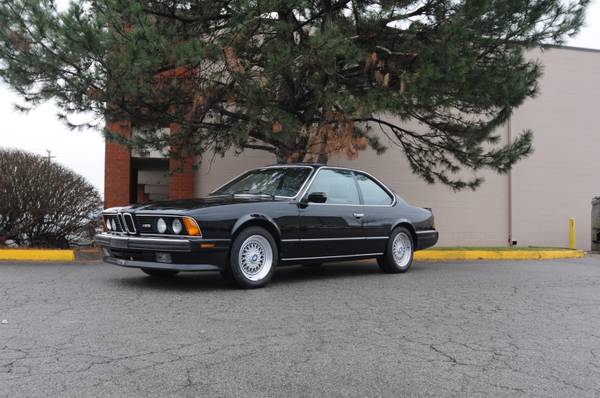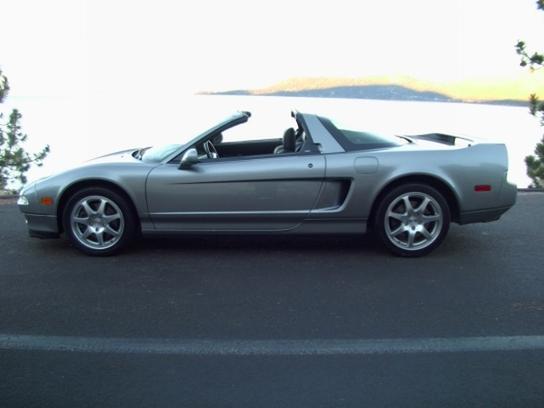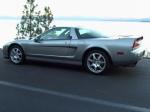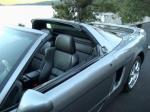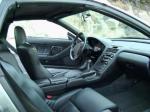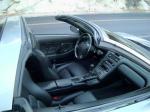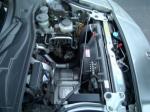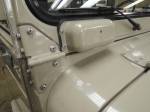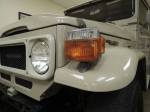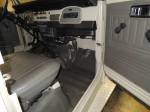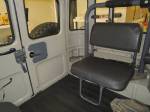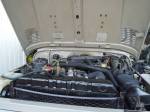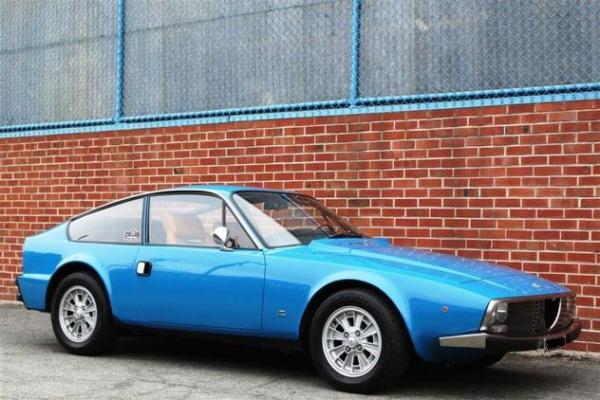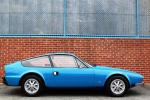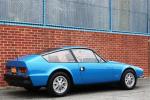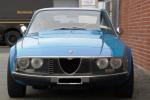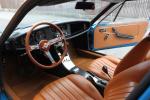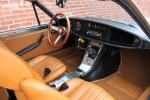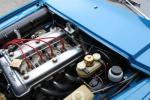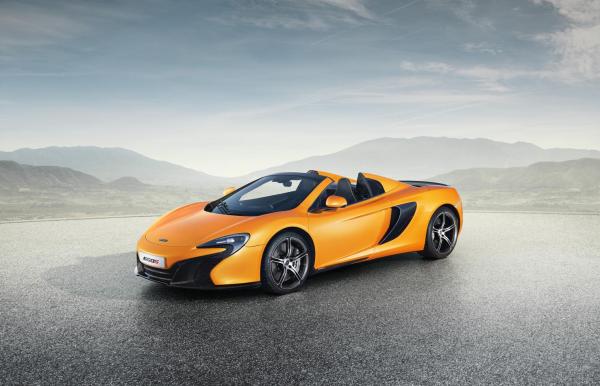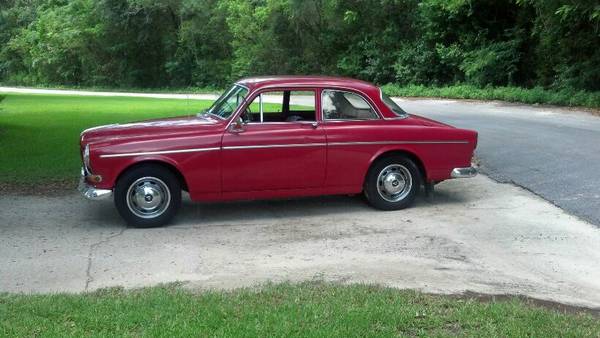Perhaps one of the greatest testaments to any marque, any nameplate, is how long the car which represents it remains more or less unchanged; the Jeep C/Y/JK and Porsche 911, for example. Among sedan/saloon cars, the one that stands out is the Jaguar XJ. Since its introduction in 1968 to its modern day replacement (bearing the same name) in 2010, the XJ maintained its basic shape and much of the same characteristics as it did when it debuted. Timeless. To many, its zenith came in the Series III of the early- to mid-80s. With its Pininfarina styling queues, Bosch fuel injection and refinements like a sunroof as well as cruise control, the Series III became the quintessential Jag saloon. Despite the more sporting predecessors like the 3.8 MK2 or the more powerful Supercharged version that came after—not to mention the completely advanced new XJ—this is the car, along with the E Type, that comes to mind with the mention of a “Jag;” not unlike the 308 GTB/S will, for many years to come, be what comes to mind when mentioning “Ferrari,” despite the legacy before it or the major advances after. With that in mind, it would be very hard to come by a better representation of what a Jaguar saloon should be than the car presented today. Yes, it is a late-model Series III, but on top of that it is the crème-de-la-crème Vanden Plas, with its Connolly leather, tasteful brightwork, exotic wood trim and rear headrests. On top of that, it has less than 34,000 miles. All original and only one owner to boot. It looks to be amazingly well kept and especially nice in its Alpine green finish, which has held up very well. Find it here on Craigslist in Asheville NC for a relatively reasonable $8,500.
Page 188 of 205
There are few cars that capture the glam of the 70s the way the Jensen Interceptor does. Particularly in Convertible form. It combined Italian styling with British appointments and powered by a big American lump. Typical of British cars of that era, it had some “quirks,” but it was and still is a gorgeous thing to behold inside and out. Finding one with little or no rust and/or mechanical woes can be difficult and restoration can be laborious and expensive. Their values simply haven’t reached a point to justify it. Therefore coming across a quality example is worthy of pursuit. This car is just that. With fresh service, excellent bodywork, new top, and a refurbished interior, this Interceptor stands out and looks especially nice in its triple Black color combo. With 70,000 mils on the clock, it’s low enough to ensure the Chrysler 440 has plenty of life, but not so low that it dissuades driving it. Priced right on the money at $20,600. Find it here on AutoTrader in Whites Creek TN.
Woodcliff Lake, NJ – March 11, 2014 . . . The BMW 3.0 CSL Group 4 race car that won the 1975 12 Hours of Sebring wins Best-in-Class at the 2014 Amelia Island Concours d’Elegance. The BMW 3.0 CSL Group 2 race car that won the 1973 European Sedan Championship takes second at the Concours. The highlight of the class of BMW 3.0 CSL race and road cars was the Alexander Calder BMW Art Car from 1975—the very first in the now legendary series of BMW Art Cars.
The 3.0 CSL race cars were the first cars to be developed under the then-new BMW Motorsport GmbH subsidiary, established in 1972 and led by Jochen Neerpasch. They were also the first to sport the new official colors of BMW Motorsport—red, purple and blue. Based on the production 3.0 CS coupe, the aluminum skinned CSL (L = lightweight) homologation special, nicknamed the ‘Batmobile’ by its fans, formed the basis for an assault on Group 2 through Group 5 European touring car racing that would make it one of the most successful production racers of all time.
The class-winning 3.0 CSL was one of a group of five chassis campaigned by BMW of North America in the 1975 and 1976 IMSA Camel GT Series in Group 4 specifications. Campaigned under the racing numbers #24 and #25, the CSL enjoyed considerable success winning at Sebring, Riverside, Laguna Seca, Daytona and Talladega in 1975. Several iconic drivers were involved in the American success of the CSL’s, including Brian Redman, Hans Stuck, Sam Posey, Ronnie Peterson, Dieter Quester, Benny Parsons, Peter Gregg and David Hobbs. This car, sporting race number 25, is part of the BMW of North America Classic collection and is configured as it raced and won at the 1975 running of the 12 Hours of Sebring with drivers Brian Redman, Hans Stuck, Sam Posey and Alan Moffat.
The BMW 3.0 CSL race car that took runner-up honors was built in 1972 to compete in FIA Group 2. This particular car brought the 1973 European Sedan Championship to Dieter Quester and Toine Hezemans and is owned and vintage raced by BMW collectors Scott and Fran Hughes of Sunset, South Carolina.
The BMW 3.0 CSL class also included the car that won the 24 Hours of Daytona in 1976 driven by Brian Redman, Peter Gregg and John Fitzpatrick.
A limited number of BMW 3.0 CSL models were produced and sold for street use in order to homologate the car for racing. The road-going BMW 3.0 CSLs featured in the class at the 2014 Amelia Island Concours d’Elegance included a car entered by Indy 500 winner and BMW Team RLL team principal, Bobby Rahal.
The class-winning BMW 3.0 CSL #25 will be featured in the Gallery of Legends at the 62nd running of the 12 Hours of Sebring this weekend.
While its genesis was in the E9 CSL Coupés that preceded it, the BMW’s M badge—at least on these shores—established itself in the 6-Series-based M6. It was launched here in 1987 and was the swan song to the E24 that enjoyed a 14-year run, due largely to its timeless styling and the kind of performance that delivers on the promise of “The Ultimate Driving Machine.” While it is 30 hp shy of its European counterpart, with its brilliant M88 inline 6 derived from the M1, its 252 hp was quite respectable for a 50-state GT in its day (more a Porsche 911 or Ferrari 308 with roughly the same weight as the Porsche). Today, it’s unusual to find a car with less than 100,000 miles for under $15,000. The M6 presented here has traveled 83,000 miles, appears to have been very well kept with complete service records, a tidy original interior and what looks to be original paint with only one spot of rust from a poor windshield installation (easily addressed). Find it here on Craigslist in Lexington KY for $14,000.
Nearly 10 years after the Acura NSX ceased production, even the most Euro-centric enthusiasts among us still dart our eye towards one if it should pass by. Its only real flaw was that it wore the badge of a Japanese marque that was better known for sensible, economical transportation for soccer moms and grad students. Then again, the same could be said of Toyota and it took on the world with the 2000 GT. I know of few real car people who wouldn’t give a limb or discretionary million dollars to own a 2000 GT. That is not to say the NSX is destined for that kind of status, but they certainly do warrant respect for what they are. To this day, their shape is not dated and if it wore a badge like Pagani or Bugatti or something else that ended in ‘i,’ they would be media darlings (as demonstrated by the recent buzz surrounding the close-to-production NSX concept car that’s making its way around the show circuit.
If then you’re in the market for an NSX—or even if you haven’t considered one—you can’t do too much better than the one presented here. To begin with it’s a later model with the much-improved 3.2 Litre and 6-speed gearbox that propelled the car to 60 in under five seconds. There are still very few cars under a half million bucks that can claim that and the NSX does so with the aforementioned sensibility that comes from being a Honda. This car looks exceptionally good in its Kaiser Silver paint over a well cared for Onyx leather interior. With just under 52,000 miles, it’s not exactly vestal but it’s also not a weathered 100,000-mile example that so many NSXs are (further testament to their reliability). It’s a car that its next owner can do what it was meant for—to enjoy it—without too much bother of racking up miles. While it’s true that an older, high-mileage, 3.0 L NSX can be had for well under $30,000, this cars obvious care and improved drivability doesn’t make its asking price of $44,800 unreasonable. Find it here on AutoTrader in Incline Village, Nevada.
Few cars evoke ruggedness and durability the way the legendary Toyota FJ40 Land Cruiser does. During its 24-year lifespan, it remained one of the most capable off-road vehicles on the planet, but near the end, after 1979, some refinements such as power steering, air conditioning and comfy seats were introduced, setting the table for the luxurious Land Cruisers we think of today. This example is from 1980 and was purchased new by its current owner from Toyota of Orange. It’s traveled 103,000 miles and in all of those, has only been off the road once. A California car for its entire life, it still wears its original Dune Beige paint on a completely rust-free body and looks fantastic. With restored examples fetching around the $60,000 mark, this one in completely original form is a relative bargain at half that. Find it here on Craigslist in Orange County for $29,500.
Following the tradition established by previous Alfa Romeo-Zagato collaborations, the Junior Zagato featured unique coachwork on the high performance variant mechanical components from standard production cars. Featuring a dual Weber version of the 1600 powerplant and weighing in at just 2100 pounds despite using aluminum only for the engine lid and doors, the car performed well. Its low center of gravity and rakish lines made the car handle and look much more sporting than the rather square-rigged car on which it was based, and with only 402 1600cc examples built, they are quite rare as well. From 1999 to 2004, the car received an extremely thorough and fastidious restoration. The car was subtly upgraded as well during the restoration, with the fitment of magnesium Campagnolo wheels, Shankle suspension with Koni shocks. The transmission was rebuilt and the engine and Webers were completely rebuilt. A lightened flywheel was installed and the differential was rebuilt with a limited slip. The brakes were completely rebuilt, and all suspension was rebuilt and rebushed. Uprated sway bars were also fitted. High compression Venolia pistons were fitted, along with European 2 liter camshafts, and all rotating parts were lightened and balanced. The cylinder head and headers were carefully polished and matched to one another. This work was completed 9000 miles ago and the car has seen regular maintenance since, including fluid changes, new tires, new motor mounts, and various other minor work to keep the car in top condition. The car comes with an extensive spares package of NOS and good original parts, from consumable mechanical items to exterior trim, lights, antenna components, ventilation components, weatherstripping, filters, interior trim, a spare steel wheel, a set of four like new Carello headlamps with trim rings, and many other items. Find it here on AutoTrader Classics with a tempting price of $23,000
McLaren Automotive has now released images and full information for the convertible version of its latest model, the McLaren 650S, unveiled at the 84th International Geneva Motor Show. The McLaren 650S Spider is a no compromise open-top high performance sports car offering the same performance, handling and driver enjoyment, with the addition of a two-piece retractable hard top. The latest model is shown in Tarocco Orange, a new addition to the McLaren colour collection, developed with technology partner AkzoNobel.
The McLaren 650S Spider is mechanically identical to the 650S Coupé and is fitted with the unique McLaren M838T twin turbo V8 engine, producing 650PS (641 bhp) and 678 Nm (500 lb ft). This means a 0-100 km/h (62 mph) sprint of 3.0 seconds, identical to the Coupé, and 200 km/h (124 mph) is reached in 8.6 seconds, only 0.2 seconds shy of the fixed-head model. Maximum speed is 329 km/h mph (204 mph). Fuel consumption and emissions remain the same for the 650S Spider, returning 24.2 mpg (11.7 l/100km) on the EU combined cycle and 275 g/km.
Most competitors do not offer high performance iterations as convertibles due to the compromises that invariably plague open-roof cars. These models will be heavier and have substantially less torsional rigidity, to the detriment of handling and ride.
The carbon fibre MonoCell chassis at the heart of the McLaren 650S requires no additional strengthening or reinforcing in open-top guise, and gives the 650S Spider identical handling and ride, and virtually identical straight-line performance figures. The overall weight of the 650S Spider is 1,370 kg (dry), an increase of only 40 kg over the Coupé, with this additional mass coming from the Retractable Hard Top and roof mechanism, and is less than any other car in its class.
The two-piece Retractable Hard Top can be automatically raised or lower in less than 17 seconds, and can be activated while stationary or at any speed up to 30km/h (19mph).
As with the 12C Spider, the 650S Spider uses a heated glass rear window, operating independently of the roof. With the roof down, the rear window acts as a wind deflector, reducing cabin buffeting. Roof up, the rear screen can be lowered to allow more engine noise – and driving drama – into the cabin, and for a semi-open top driving experience even when it is raining. When down, the roof is stowed beneath a body-coloured hard tonneau cover incorporated in the twin rear buttresses. With the roof raised, the area beneath the tonneau cover can be used as additional luggage space.
Rather than being a stripped out road racer, the 650S Coupé and 650 Spider models are fitted with a high level of luxury equipment as standard. Carbon ceramic brakes sit behind unique ‘650’ lightweight alloy wheels shod with Pirelli P Zero™ Corsa tyres, IRIS satellite navigation with Bluetooth telephony, DAB digital radio in Europe (SIRIUS satellite radio in North America), wireless tethering, audio streaming and voice control are all fitted as standard, and the cabin is fully trimmed in Alcantara.
TECHNICAL SPECIFICATION– McLaren 650S SPIDER
| Drivetrain Layout | Longitudinal Mid-Engine, RWD | Track, F/R (mm) | 1656 / 1583 |
| Engine Configuration | V8 Twin Turbo / 3799cc | Length (mm) | 4512 |
| Engine PS / rpm | 650 / 7250 | Width (mm) | 2093 |
| Torque Nm / rpm | 678 / 6000 | Height (mm) | 1203 |
| Transmission | 7 Speed SSG | Dry Weight (kg / lbs) | 1370 / 3020 |
| Body Structure | Carbon Fibre MonoCell with Aluminium Front and Rear Frames | Active Aerodynamics | McLaren Airbrake |
| Wheelbase (mm) | 2670 | Suspension | ProActive Chassis Control |
| Brakes | Carbon Ceramic Discs with Forged Aluminium Hubs (F 394mm/R 380mm) | ProActive Chassis Control modes | Normal / Sport / Track |
| Tyres (F/R) | Pirelli P Zero Corsa 235/35 R19 / Pirelli P Zero Corsa 305/30 R20 | Powertrain Modes | Winter / Normal / Sport / Track |
| Wheel Sizes (F/R) | 19” x 8.5”J / 20” x 11” J |
PERFORMANCE DATA – McLaren 650S SPIDER
| Efficiency | CO2 | 275 g/km |
| Fuel consumption (combined) | 24.2 mpg | |
| Power to weight (with lightweight options) | 485 PS (478 bhp) /tonne | |
| CO2/power | 0.42 g/km per PS | |
| Speed | Maximum speed | 329 km/h (204 mph) |
| Acceleration | 0-100 kph (62 mph) | 3.0 s* |
| 0-200 kph (124 mph) | 8.6 s* | |
| 0-300 kph (186 mph) | 26.5 s* | |
| 0-400 m / ¼ mile | 10.6 @ 222 km/h (138 mph)* | |
| Braking | Braking | 100-0 km/h 30.7 m (101 ft) |
| 200-0 km/h 124 m (407 ft) | ||
| 300-0 km/h 273 m (896 ft) |
*with standard-fit Pirelli P Zero™ Corsa tyre
All figures apply to a European specification McLaren 6505 Spider
When the Volvo Amazon was introduced, it was seen as a car that had big car looks, safety features, and comfort with a small car sensibility. By the mid 60s, the 122S continued to be a pioneer in safety and was propelled by the now legendary B18 motor. Following the styling trends of Detroit and Italy, the rounded ponton styling was giving way to sleeker, more edgy shapes and the so too the 122S was replaced by the 140 Series, but not before laying a a foundation to the 1800 Series. In its final years, the most coveted are the 123 GTs—of which only a limited number were produced—featuring a 115-hp B18B motor and unique 4-speed gearbox. Prior to that, in 1966, a two-door 122S would provide more than adequate performance (90-hp), balanced handling, and of course outstanding braking. The car presented today is an excellent example of the 1966 Volvo 122S Coupé. Having travelled less than 70,000 miles, it is barely past break-in. It retains its original motor, gearbox, and interior, down to the original AM-FM radio. With its Weber carbs (replacing the stock SUs) and working fog lamps and recent service, it comes as close to a GT as one could hope for a 1966 for about $5,000 less for a guideline car that would likely have many more miles, given the durability of the B18. Find it here on Craigslist in Pinetta FL for $10,000.
(Geneva, Switzerland.3 March 2014) Bentley unveils a suite of luxury specification updates to its Continental family of grand tourers at the Salon International De L’auto 2014. This is headlined by enhancements to the styling, power, torque and performance of the flagship model, Continental 6.0-litre W12 GT Speed, which makes its global debut at the show in both coupe and convertible guise.
Also being unveiled for the first time in Geneva is the new Flying Spur V8. Bentley is now offering this luxury sedan with its renowned 4.0-litre twin turbo V8 engine, introducing the appeal of this acclaimed sedan to a wider premium audience. A strong presence at Geneva is completed by the introduction of two new specifications for Bentley’s flagship Mulsanne which offer even more comfort and advanced, in-car entertainment options.
“Making its global debut at the Geneva Show, the new Continental GT Speed is the ultimate expression of the modern Bentley grand tourer. This one car effortlessly combines immense, dramatic levels of performance with the exemplary standards of luxury, individuality and refinement our company is renowned for,” comments Dr. Wolfgang Schreiber, Chairman and Chief Executive of Bentley Motors.
Enhanced power and style for Continental GT Speed
The capabilities of Bentley’s flagship grand tourer, the Continental GT Speed are dramatically underlined in 2014 with enhancements to its unique combination of supercar performance and unrivalled refinement.
Bentley’s iconic 6.0-litre twin-turbo W12 engine is now even more potent and develops 635 PS (626 bhp / 467 kW) and a record 820 Nm torque. The ultimate new Bentley GT Speed coupe reaches a top speed of 206 mph (331 km/h) – the fastest production Bentley ever – while the convertible reaches 203 mph (327 km/h).
The extra dynamic performance to the Continental flagship model is complemented by an even more distinctive road presence. The sharp front splitter, discreet side skirts and elegant rear diffuser of the Mulliner Styling Specification are finished to match the exterior paint colour and a dark tint finish applied to the 21” Speed wheel design, headlamps and tail lamps. The new appearance is further complemented by red-painted brake calipers and a stylish chrome “Speed” badge fitted to the front fenders and inside the luxurious cabin there is a completely new colour split reserved exclusively for the Speed models.
